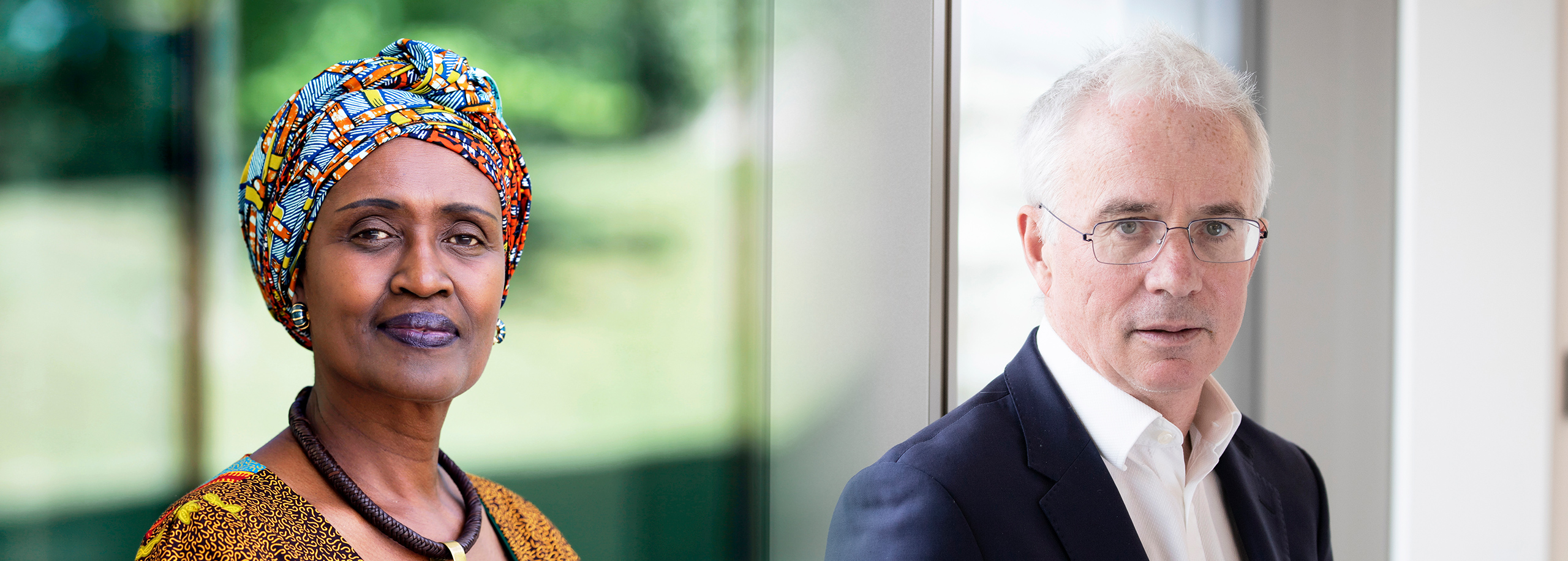|
Getting your Trinity Audio player ready…
|
By Winnie Byanyima and Peter Sands
As vaccinations against COVID-19 ramp up across Europe and North America, many people are welcoming hugs from loved ones, restaurants and beaches are reopening and a return to a sense of normality in many countries is beckoning. In much of the rich world, the prospect of eliminating COVID19 as a public health threat is on the horizon. Yet the pandemic remains devastating in many of the world’s poorest countries and communities. Inequality is usually the biggest hurdle to clear in the race to end diseases.
We have been here before with the deadliest and the most recent pandemic – HIV. Forty years ago this year, the first cases of AIDS were reported. In the intervening years, over people, 77 million people have become infected with HIV and over 34 million have died from AIDS-related illnesses worldwide. Today, HIV, which still kills almost 700,000 people every year, is largely a disease of the most marginalized.
It could have been much worse. Two decades ago, and after sustained campaigns by activists, the international community came together determined to make HIV treatment, prevention, and care available to everyone, not just the rich.
In 1996, UNAIDS now celebrating 25 years since its founding, was formed to coordinate a strong global response to HIV and AIDS. In the same year, highly active antiretroviral therapy for HIV became available for people in rich countries. The price of the lifesaving treatment – which now costs as low as US$66 per year – was nearly US$10,000 a year.
As the drugs saved lives and rejuvenated communities in rich countries, people in poorer countries continued to die from AIDS-related illnesses in massive numbers.
In June 2001 – the United Nations General Assembly convened the first special session dedicated to HIV and AIDS. The meeting was a major milestone in galvanizing a faster global response to HIV. It called for the creation of the Global Fund, which celebrates its 20th anniversary this year. In 2003, U.S. President George W. Bush created the United States President’s Emergency Plan For AIDS Relief (PEPFAR) with the goal of responding to HIV in the poorest countries. Together, the Global Fund and PEPFAR, with support from UNAIDS and other partners, led ambitious and vigorous investments to expand access to HIV treatment, prevention, and care. The impact was swift: AIDS-related deaths peaked in 2004 and then began to sharply decline, marking a remarkable turnaround in the fight against the virus.
Yet, even today, inequalities persist. In sub-Saharan Africa, adolescent girls and young women are more than twice as likely to acquire HIV than their male peers. Key populations such as gay men and other men who have sex with men, sex workers, transgender people, people who inject drugs, and people in prison and their partners continue to be disproportionately affected by HIV. For instance, transgender women are 49 times more likely to acquire HIV than other adults of reproductive age.
Stigma and discrimination, the marginalization and criminalization of communities, and a lack of access to health, education, and other essential services have pushed us off track of the Sustainable Development Goal target of ending AIDS as a public health threat by 2030. COVID-19 has disrupted progress even further. In a recent Global Fund survey of more than 30 countries, HIV testing across all the facilities surveyed fell 41%.
Even before COVID-19, we were not on track to meet the global targets for 2020, agreed in the 2016 Political Declaration on HIV. With the disruptions to health systems and HIV service delivery caused by COVID-19, we now face the sobering prospect of losing some of the hard-won gains achieved over the last 20 years. These missed targets have come at a tragic human cost: around 690 000 people died of AIDS-related deaths in 2020 and there were 1.5 million new HIV infections – 3 times the target that the world had set itself in 2016 as part of its ambition to get on track to end AIDS as a public health threat by 2030.
We’ve faced tough challenges before, but we know that if we can make smarter investments by addressing the inequalities that fuel new HIV infections and prevent people from accessing services, we can regain the lost ground and accelerate progress. We must invest more: HIV investments in recent years have fallen far short of what is needed to end AIDS as an epidemic by 2030. Insufficient investments today lead to higher future costs and more preventable deaths.
Above all, we must take urgent action to end the inequalities that drive HIV. We can do that by ensuing rapid access to the best science for all, by removing discriminatory laws that leave people behind because of their gender identities or sexual orientation, and by changing policies that exacerbate existing structural and social inequities.
To get there, we can draw inspiration from the courage and determination of those who fought for equitable access to HIV prevention, treatment, and care two decades ago. To get back on track and end AIDS as a public health threat once and for all will take more money and better science, but above all, it will take unswerving commitment to tackle the inequalities that fuel the epidemic. That’s a challenge we can and must rise to.
This op-ed was first published in The Telegraph.
